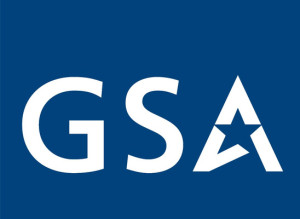
GSA starts translating Trump’s priorities into acquisition policy
Policy updates include changes to the Transactional Data Reporting Rule, the reopening of Schedule 75 for office supplies, and streamlining professional services...
The General Services Administration is going to have its hands full this summer as it works toward translating President Donald Trump’s contracting priorities into policy.
Jack St. John, GSA’s chief of staff, outlined a few of these priorities for a crowd of contractors at the May 11 Coalition for Government Procurement’s Spring Conference in Falls Church, Virginia.
“We are in the process of making changes, one of which is switching the [Transactional Data Reporting] requirement from a mandatory to a voluntary process. We’re going to reexamine the burdens and benefits of TDR,” he said.
GSA released the final data transaction reporting rule June 23, 2016, creating a requirement for government contractors to submit information about transactions through the schedule contracts and those governmentwide acquisition contracts run by the agency.
GSA said transactional data refers to the information generated when the government purchases goods or services from a vendor. It includes specific details such as descriptions, part numbers, quantities and prices paid for the items purchased.
But TDR came under fire from vendors who said that the new requirements simply shifted the burden in requirements, rather than alleviating them.
St. John said the changes to TDR stem from the Trump administration’s desire to relieve the regulatory contract burden on vendors.
Professional Services
Likewise, St. John said efforts are underway to reduce the burden of making solicitations under the Professional Services Schedule.
“Over time, and with good intent, the current [Professional Services Schedule] solicitation has grown to 167 pages, with 17 sections and more than a dozen appendices and templates. The sheer volume and complexity of the solicitation requires refreshment and streamlining,” he said.
He broke that down into concrete goals, which include:
- reducing costs of submitting an offer under PSS;
- improving the timeliness of offer review;
- providing transparency regarding contractors’ qualifications to be awarded a PSS before the offer is submitted;
- clear and concise instructions, eliminating repetition in solicitation requirements;
- ensuring clause provision consistency among all 21 multiple award schedule offerings;
- moving unnecessary, obsolete and conflicting clauses; and
- developing a final strategy to reopen Schedule 75.
Schedule 75
Schedule 75 is a GSA contract vehicle that allows federal agencies to purchase office supplies. It was closed down in 2010 in favor of blanket purchasing agreements with 15 companies, but last year, GSA announced that it was considering reopening the schedule.
St. John said that GSA made the decision to do so in order to expand its existing contractor pool, especially small businesses that were frozen out when the schedule closed.
“GSA’s duty is and always will be to support our federal clients while keeping our commitment to the American taxpayer,” he said. “In the past though, some have viewed this commitment on the one hand, and the health of the supplier community on the other, as mutually exclusive.”
“Let me put it as bluntly and succinctly as possible,” he continued. “The Trump administration does not share this view.”
Best-in-Class Contracting
Brian Friel, founder of Nation Analytics, said the circumstances around the reopening of Schedule 75 is part of a larger pull back from Best-in-Class contracting.
“I think we’re in a real flex period for acquisition strategy [in some of the commercial space], and I think we heard that from Mr. St. John, talking about the reopening of schedule 75, where there’s a very serious tension right now between the notion of best-in-class contracts, where a limited number of companies are selected,” Friel said.
He said that limited pool of vendors will have to change, because it’s not working as it was intended. For example, he said that when the Homeland Security Department decided to move to OASIS, that froze out several companies that were not on OASIS, but would have been considered best-in-class for DHS because of their experience with the department.
Moves like that, he said, signal a general unwillingness to create new contract vehicles, especially in professional services. Partially, that’s to help reduce contract duplication, but also because agencies are seeing that it takes too long to create a new contract vehicle and get it functional.
Cost Consciousness
Friel also warned contractors that agencies may be less willing to pay for premium service on contracts, especially on the civilian side, if the President gets his way on future budget cuts. He said this is especially significant to contractors with recompetes coming up.
“If you come in at a 12 percent premium over your competitor, and you’re excellent and they’re acceptable, I think they’re going to say, ‘We’re not willing to pay that kind of premium.’ Or ‘Acceptable is good enough in this environment,’” he said.
Budget pressure, or even the perception of being squeezed, can drive these kinds of decisions, Friel said.
New Requirements
Friel said he saw a few trends in new requirements in the appropriations bill that are worth being aware of.
IT systems modernization is one of those trends. He said the State Department just issued a 10-year, $850 million solicitation for modernization of the consular systems, digitizing passport systems and other customer-facing systems.
“There’s not going to be tons of that, but where there are new requirements, that kind of systems modernization is going to be a big thing,” he said.
Another is data analytics. He said agencies are trying to modernize the way they consume information.
“Out of the new requirements that were issued last year, that was the second most prevalent new kind of requirement we saw last year, and I think we’ll continue to see that next year,” Friel said.
Finally, he said the most prevalent new requirement is in health. The Veterans Affairs Department has seen bipartisan support for increases, he said, and it’s reconsidering, along with the Defense Health Administration at the Defense Department, how to modernize and become more mobile.
“I think something that companies should look at is, ‘Where is the new new?’ And I think, especially with the discussion of creating a modernization fund that agencies could potentially tap into, that’s an area in particular that you’re going to see new opportunities,” Friel said.
Copyright © 2025 Federal News Network. All rights reserved. This website is not intended for users located within the European Economic Area.
Daisy Thornton is Federal News Network’s digital managing editor. In addition to her editing responsibilities, she covers federal management, workforce and technology issues. She is also the commentary editor; email her your letters to the editor and pitches for contributed bylines.
Follow @dthorntonWFED





